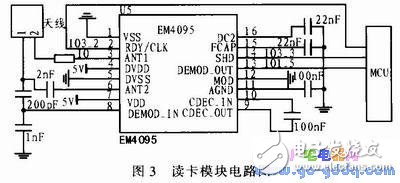RFID tag reading and CAN bus communication technology for garment production workstations
Garment manufacturing is a typical labor-intensive industry. Informatization production management is usually lacking, especially the management of workshops. Modern companies expect to use high technology to enhance the competitiveness of their products and reduce costs, and to maximize their production capacity through the effective use and control of logistics information. Internationally, along with information explosion in the management of production logistics information, RFID technology has been introduced to ease the burden of manual input and processing of large amounts of data, providing a basis for refined management of production processes. Nowadays, domestic garment manufacturers are keen on the informationization of garment production, and it is urgent to develop cheap smart clothing production position machines. The use of NXP's 32-bit ARM controller with built-in CAN controller, plus an RFID reader module and CAN transceiver, eliminates the need for a CAN controller chip. CAN communication adopts the one-chip computer internal CAN controller, the communication agreement is realized by the one-chip computer software, thus has simplified the applied circuit, has improved the practicability of the circuit.
1 NXP Semiconductors LPC11C14 Microcontroller Brief DescriptionLPC11C14 uses ARM's Cortex-M0 core, which has the features of extremely low power consumption, a small number of gates, and a small code footprint. Because of its low price and powerful control and computing performance, it is widely used in embedded networks. The specific performance indicators are as follows: 1) Operating frequency: up to 50 MHz; operating temperature range: -40 to +85°; wide voltage supply: 1.8 to 3.6 V; 2) 32 kbytes of flash memory and 8 k SRAM; 3) 2 16-bit general-purpose timers and 2 32-bit general-purpose timers; 4) CAN control unit, internal ROM integration for initialization and communication API functions used by CAN and CANOpen standards, the user can directly call; Compatible with CAN2.0A/B, the transmission rate is high with 1 Mbit/s; 32 message objects are supported, and each message object has its own mask identifier; maskable interrupts are provided.
2 RFID technology analysisDiscretely manufactured products are often assembled by processing multiple parts through a series of discrete processes. Garment manufacturing falls into this category. The variety of products in the production process is complex and the process is complex, including a huge amount of production logistics information. Therefore, the radio frequency identification system used in apparel manufacturing needs to consist of three parts: 1) Transponder, ie RFID tag for materials, consisting of a coupling element and a chip, with built-in antenna for communication with a radio frequency antenna. The tag used in this system is a read-only non-contact card with a carrier frequency of 125 kHz. It senses the power supply by the card reader and reads out the unique card number stored in the chip's EEPROM. Passive and non-contact are the two most prominent features of the chip. The RF interface circuit is the key core technology. It receives RF energy from the card reader, generates power and clock for the chip, and uses phase-shift keying and loading amplitude modulation. The technology implements wireless communication between the card and the reader. 2) The reader uses line RF signals to communicate with the transponder through spatial coupling (alternating magnetic field or electromagnetic field). Within the coupling channel, energy transfer and data exchange will be achieved based on timing relationships. After the tag information is read, it will be transmitted to the back-end application software. 3) The application software processes the transponder information acquired by the reader and uploads it to the server via the CAN bus. The structure of the RFID system is shown in Figure 1.

The LPC11C14-based workstation hardware consists of a RF reader module, a power input, and a CAN communication module. The overall hardware diagram is shown in Figure 2.

Ear Plugs,Bluetooth Earplugs,High Fidelity Ear Plugs,Noise Reducing Ear Plugs
GUANGZHOU LIWEI ELECTRONICS CO.,LTD , https://www.gdliwei.com